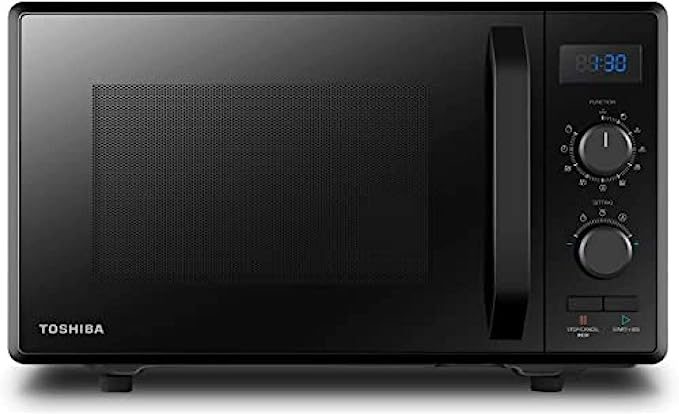
Achieving Energy Efficiency with Smart Home Technology
Introduction
In today’s modern world, energy efficiency has become a paramount concern for both individuals and businesses. As the demand for energy continues to rise, it is essential to explore innovative solutions that can help us conserve energy and reduce our carbon footprint. One such solution that has gained significant traction in recent years is smart home technology. In this article, we will delve into the realm of smart homes and discuss how they can revolutionize energy efficiency.
Understanding Smart Home Technology
What are Smart Homes?
Smart homes refer to residences equipped with devices and systems that can be controlled remotely and intelligently. These devices are interconnected through the Internet of Things (IoT), allowing homeowners to monitor and manage various aspects of their home with ease. From lighting and heating to security and entertainment, smart home technology offers a wide range of features that enhance convenience, comfort, and energy efficiency.
Key Components of Smart Home Technology.
- Smart Thermostats: A smart thermostat is a revolutionary device that enables homeowners to control their home’s temperature settings remotely. By leveraging advanced sensors and machine learning algorithms, smart thermostats learn your preferences and automatically adjust the temperature to optimize energy usage. For instance, they can lower the temperature when you’re away and raise it before you arrive, ensuring optimal comfort without wasting energy.
- Energy Monitoring Systems: Energy monitoring systems provide real-time insights into your home’s energy consumption. These systems utilize smart meters and sensors to track electricity usage and identify areas of inefficiency. By analysing the data, homeowners can make informed decisions regarding energy usage and identify opportunities for optimization.
- Smart Lighting: Smart lighting solutions enable homeowners to control and automate their lighting systems. With features like motion sensors and scheduling capabilities, smart lighting ensures that lights are only turned on when needed. Additionally, advanced dimming and colour options can help create ambiance while minimizing energy consumption.
- Smart Appliances: From refrigerators and washing machines to dishwashers and ovens, smart appliances are designed to operate efficiently and intelligently. They can adjust their settings based on usage patterns, optimize energy consumption, and even provide alerts or recommendations to improve energy efficiency.
These Products Are Energy Efficiency For Smart Home Technology.
CLICK ON IMAGE TO SEE MORE OR BUY From Amazon…
The Impact of Smart Home Technology on Energy Efficiency
Reducing Energy Waste.
One of the primary benefits of smart home technology is its ability to reduce energy waste. By automating various processes and providing real-time insights, smart home systems empower homeowners to make smarter choices regarding energy consumption. For example, smart thermostats can detect when no one is home and adjust the temperature accordingly, preventing unnecessary energy expenditure.
Optimizing Energy Consumption.
Smart home technology allows homeowners to optimize energy consumption by tailoring it to their specific needs. With features like energy monitoring systems, users can identify energy-intensive appliances and make informed decisions about their usage. By scheduling energy-intensive tasks during off-peak hours or replacing outdated appliances with energy-efficient alternatives, homeowners can significantly reduce their energy consumption.
Enhancing Energy Awareness.
Another significant advantage of smart home technology is its ability to enhance energy awareness. Through real-time data and intuitive interfaces, homeowners can gain valuable insights into their energy usage patterns. This awareness encourages behavioural changes and promotes more conscious energy consumption habits. By being aware of their energy usage, individuals can identify opportunities for improvement and work towards sustainable living.
UK Cheapest Energy Supplier – Save and Earn.
If you’re looking to save money on your utility bills, UW Utility Warehouse could be the perfect solution for you. Trusted by Ben Fogle and over 800,000 customers and still counting. Not only can you save money on your bills, but you can also earn money by becoming a distributor. Read more.
Conclusion 1.
As our society strives for a greener and more sustainable future, smart home technology emerges as a powerful tool in achieving energy efficiency. By leveraging the interconnectedness of devices and the power of automation, smart homes empower individuals to reduce energy waste, optimize consumption, and cultivate a greater awareness of their environmental impact. Embracing smart home technology is not only a step towards a more energy-efficient lifestyle but also a contribution to a brighter and more sustainable future for generations to come.
Implementing Smart Home Technology for Energy Efficiency
Step 1: Assess Your Energy Usage
Before diving into smart home technology, it is crucial to assess your current energy usage patterns. Identify areas of inefficiency and prioritize the aspects where energy conservation is most needed. This assessment will serve as a foundation for implementing the right smart home solutions.
Step 2: Invest in Smart Thermostats.
Smart thermostats are a cornerstone of energy-efficient homes. They provide precise control over your home’s heating and cooling systems. By learning your preferences and adjusting temperature settings accordingly, smart thermostats optimize energy consumption without compromising comfort. Consider installing smart thermostats in key areas of your home to regulate temperature effectively.
Step 3: Upgrade to Smart Lighting Systems

Traditional incandescent bulbs are notorious for their energy inefficiency. Replace them with energy-efficient LED bulbs and enhance their capabilities by integrating smart lighting systems. With smart lighting, you can automate lighting schedules, dim lights when natural light is available, and even control them remotely. These features not only save energy but also create a cosy ambiance.
Step 4: Integrate Smart Appliances.
When the time comes to replace old appliances, opt for energy-efficient models with smart capabilities. Smart appliances, such as refrigerators, washing machines, and dishwashers, utilize advanced sensors and automation to optimize energy usage. They can adjust settings based on load, time of day, and user preferences, ensuring that energy is not wasted unnecessarily.
Step 5: Install Energy Monitoring Systems.
To gain a comprehensive understanding of your energy consumption, consider installing energy monitoring systems. These systems provide real-time data on electricity usage, allowing you to identify energy-intensive appliances or behaviours. Armed with this information, you can make informed decisions about energy conservation and take steps to reduce waste.
Step 6: Embrace Smart Home Security.
Smart home security systems offer more than just protection. They can contribute to energy efficiency as well. For instance, integrated motion sensors can automatically turn off lights in unoccupied rooms, reducing unnecessary energy consumption. Additionally, smart security cameras can be programmed to operate only when required, conserving power without compromising safety.
Step 7: Leverage Automation and Voice Control.
Automation is a key feature of smart homes that enhances energy efficiency. By setting up automation routines, you can control various devices simultaneously, reducing the chances of leaving appliances or lights on when not needed. Additionally, voice control through virtual assistants like Amazon Alexa or Google Assistant allows you to effortlessly manage your smart home, ensuring energy optimization with simple voice commands.
The Future of Smart Homes and Energy Efficiency.
As technology continues to advance, smart home systems will become even more sophisticated, seamlessly integrating with renewable energy sources like solar panels and storage systems. This integration will enable homeowners to generate their own clean energy, further reducing reliance on traditional power grids.
Moreover, advancements in artificial intelligence and machine learning will enhance the ability of smart home systems to learn and adapt to individual preferences and habits. This continual optimization will lead to greater energy efficiency and more personalized experiences for homeowners.
Conclusion 2.
Smart home technology has ushered in a new era of energy efficiency and convenience. By embracing smart home solutions such as thermostats, lighting systems, appliances, and security, homeowners can significantly reduce their energy consumption without sacrificing comfort or convenience. Implementing these technologies not only benefits individuals but also contributes to a more sustainable future by minimizing our carbon footprint. As we continue to prioritize energy efficiency, smart homes will play a vital role in shaping a greener and more sustainable world.
Remember, achieving energy efficiency through smart home technology requires a comprehensive approach that encompasses multiple aspects of your home. By carefully selecting and integrating the right smart devices and systems, you can transform your house into an energy-efficient haven. Start today and embrace the power of smart home technology for a more sustainable future.
UK’s Cheapest Energy Supplier UW Utility Warehouse.







